-
-
Space seems so incredibly vast and empty, but there is a lot hidden inside that seemingly empty void. From fungal spores to charged bucky balls. Radiation in space seeps everywhere and makes long term space travel dangerous for humans, but fungal spores cope just fine. Radiation can also cause beautiful light shows like the aurora but can make light tough for astronauts. How can we use social media to track the beautiful aurora light shows? How do we clean a space ship or space station?
References:- L. Orr, S. C. Chapman, J. W. Gjerloev. Directed network of substorms using SuperMAG ground‐based magnetometer data. Geophysical Research Letters, 2019; DOI: 10.1029/2019GL082824
- American Geophysical Union. (2019, June 27). Space station mold survives high doses of ionizing radiation: New research presented at the 2019 Astrobiology Science Conference in Bellevue, Wa.. ScienceDaily. Retrieved July 7, 2019 from www.sciencedaily.com/releases/2019/06/190627121252.htm
- M. A. Cordiner, H. Linnartz, N. L. J. Cox, J. Cami, F. Najarro, C. R. Proffitt, R. Lallement, P. Ehrenfreund, B. H. Foing, T. R. Gull, P. J. Sarre, S. B. Charnley. Confirming Interstellar C60 Using the Hubble Space Telescope. The Astrophysical Journal, 2019; 875 (2): L28 DOI: 10.3847/2041-8213/ab14e5
Episodes

Monday Jun 15, 2020
Episode 383 - Pulsars and fast radio bursts
Monday Jun 15, 2020
Monday Jun 15, 2020
From pulsars to fast radio bursts, we look at interstellar mysteries. Just how do Pulsars work? How long does it take for a Pulsar to be fed by surrounding matter? All that accretion disk matter spillaring around a Pulsar takes a long time to get there. What are Fast Radio Bursts? mysterious signals from deep space, or wobbly highly magnetised neutron stars? Magnetars, fast radio bursts and flares. What causes a fast radio burst in space to repeat?
- D R Lorimer, E F Keane, A Karastergiou, M Caleb, R P Breton, C G Bassa, D Agarwal, V Morello, B W Stappers, M B Mickaliger, K M Rajwade. Possible periodic activity in the repeating FRB 121102. Monthly Notices of the Royal Astronomical Society, 2020; 495 (4): 3551 DOI: 10.1093/mnras/staa1237
- Brian D Metzger, Ben Margalit, Lorenzo Sironi, Fast radio bursts as synchrotron maser emission from decelerating relativistic blast waves, Monthly Notices of the Royal Astronomical Society, Volume 485, Issue 3, May 2019, Pages 4091–4106, https://doi.org/10.1093/mnras/stz700
- Hall, S., & Quanta Magazine. (n.d.). A Surprise Discovery Points to the Source of Fast Radio Bursts. Retrieved June 13, 2020, from https://www.quantamagazine.org/a-surprise-discovery-shows-magnetars-create-fast-radio-bursts-20200611/
- Monash University. (2020, June 3). Astronomers capture a pulsar 'powering up'. ScienceDaily. Retrieved June 13, 2020 from www.sciencedaily.com/releases/2020/06/200603104549.htm
- A. J. Goodwin and D. M. Russell and D. K. Galloway et al, A 12 day delay between optical and X-ray activity during outburst rise in a low-mass X-ray binary, arXiv, astro-ph.HE, 2006.02872, 2020

Monday May 25, 2020
Episode 380 - New comets, touching an asteroid and the moon
Monday May 25, 2020
Monday May 25, 2020
New comets, touching down on an asteroid and fake diamonds on the moon. Small objects in our solar system can teach us about the early days of Earth. What happened on the moon 4.5 billion years ago to form cubic zirconia on the surface? What can we learn about the moon 4. billion years ago in dust brought back by Apollo 17? A new comet is appears for the end of May which you can see near sunrise. Another comet discovered by Michael Mattiazzo can be see near sunrise at the end of May. Touching down on an asteroid is an incredible feat, and the preliminary data from Hyabusa2 and Ryugu are fascinating.
- T. Morota, S. Sugita, Y. Cho, M. Kanamaru, E. Tatsumi, N. Sakatani, R. Honda, N. Hirata, H. Kikuchi, M. Yamada, Y. Yokota, S. Kameda, M. Matsuoka, H. Sawada, C. Honda, T. Kouyama, K. Ogawa, H. Suzuki, K. Yoshioka, M. Hayakawa, N. Hirata, M. Hirabayashi, H. Miyamoto, T. Michikami, T. Hiroi, R. Hemmi, O. S. Barnouin, C. M. Ernst, K. Kitazato, T. Nakamura, L. Riu, H. Senshu, H. Kobayashi, S. Sasaki, G. Komatsu, N. Tanabe, Y. Fujii, T. Irie, M. Suemitsu, N. Takaki, C. Sugimoto, K. Yumoto, M. Ishida, H. Kato, K. Moroi, D. Domingue, P. Michel, C. Pilorget, T. Iwata, M. Abe, M. Ohtake, Y. Nakauchi, K. Tsumura, H. Yabuta, Y. Ishihara, R. Noguchi, K. Matsumoto, A. Miura, N. Namiki, S. Tachibana, M. Arakawa, H. Ikeda, K. Wada, T. Mizuno, C. Hirose, S. Hosoda, O. Mori, T. Shimada, S. Soldini, R. Tsukizaki, H. Yano, M. Ozaki, H. Takeuchi, Y. Yamamoto, T. Okada, Y. Shimaki, K. Shirai, Y. Iijima, H. Noda, S. Kikuchi, T. Yamaguchi, N. Ogawa, G. Ono, Y. Mimasu, K. Yoshikawa, T. Takahashi, Y. Takei, A. Fujii, S. Nakazawa, F. Terui, S. Tanaka, M. Yoshikawa, T. Saiki, S. Watanabe, Y. Tsuda. Sample collection from asteroid (162173) Ryugu by Hayabusa2: Implications for surface evolution. Science, 2020; 368 (6491): 654 DOI: 10.1126/science.aaz6306
- NASA/Goddard Space Flight Center. (2020, May 13). New comet discovered by solar observatory. ScienceDaily. Retrieved May 23, 2020 from www.sciencedaily.com/releases/2020/05/200513135517.htm
- L. F. White, A. Černok, J. R. Darling, M. J. Whitehouse, K. H. Joy, C. Cayron, J. Dunlop, K. T. Tait, M. Anand. Evidence of extensive lunar crust formation in impact melt sheets 4,330 Myr ago. Nature Astronomy, 2020; DOI: 10.1038/s41550-020-1092-5

Monday May 04, 2020
Episode 377 - Hubble turns 30 and still takes amazing images
Monday May 04, 2020
Monday May 04, 2020
We celebrate the life and achievements of Hubble Space telescope and all that have worked on it over it's 30 years in space (and many more before that). We look at the challenges faced by Hubble early on, and the amazing science it is helping contribute to today. From stars being born, to comets tearing themselves apart Hubble sheds light on amazing science. The images Hubble takes are iconic and often look like science fiction. Hubble manages to celebrate it's birthday by capturing images of a comet tearing itself apart.
- Information@eso.org. (n.d.). Hubble Celebrates its 30th Anniversary with a Tapestry of Blazing Starbirth. Retrieved May 02, 2020, from https://www.spacetelescope.org/news/heic2007/
- ESA/Hubble Information Centre. (2020, April 28). Hubble captures breakup of comet ATLAS. ScienceDaily. Retrieved May 1, 2020 from www.sciencedaily.com/releases/2020/04/200428142410.htm

Monday Mar 16, 2020
Episode 370 - Explosions in space and citizen science
Monday Mar 16, 2020
Monday Mar 16, 2020
From galactic explosions, and waiting for supernova space is full of mysteries. What happens when a super massive black hole in a massive galaxy cluster...erupts? A massive explosion shred a hole 15 times larger than the Milky Way. What is happening with Betelgeuse? Could Betelgeuse just have shed it's coat? Is Betelgeuse about to go 'nova or is something else happening? We find out about galactic research you can do from your couch. Tracing out a spiral is easy for humans to do, so why not help trace out a galaxy? Looking for something to do at home, why not citizen science helping trace galaxies?
References:
- S. Giacintucci, M. Markevitch, M. Johnston-Hollitt, D. R. Wik, Q. H. S. Wang, T. E. Clarke. Discovery of a giant radio fossil in the Ophiuchus galaxy cluster. The Astrophysical Journal, 2020 [link]
- Patrick Treuthardt, Ian B Hewitt. Comparison of galaxy spiral arm pitch angle measurements using manual and automated techniques. Monthly Notices of the Royal Astronomical Society, 2020; 493 (3): 3854 DOI: 10.1093/mnras/staa354
- Emily M. Levesque, Philip Massey. Betelgeuse Just Isn't That Cool: Effective Temperature Alone Cannot Explain the Recent Dimming of Betelgeuse. submitted to arXiv, 2020 [link]

Monday Feb 17, 2020
Episode 366 - The YORP Effect, Star Brawls and Solar wind
Monday Feb 17, 2020
Monday Feb 17, 2020
What happens when stars brawl? What do they leave behind? When stars are dying they take down everything and everything around them from asteroids to other stars. What is the YORP effect? How do some tiny solar particles destroy an asteroid? Spiraling out of control, asteroids get YORP-ed at the end of a star's life. When a star gets to the end of it's life, it may swell in size, taking out asteroids and nearby stars.
- H. Olofsson, T. Khouri, M. Maercker, P. Bergman, L. Doan, D. Tafoya, W. H. T. Vlemmings, E. M. L. Humphreys, M. Lindqvist, L. Nyman, S. Ramstedt. HD 101584: circumstellar characteristics and evolutionary status. Astronomy & Astrophysics, 2019; 623: A153 DOI: 10.1051/0004-6361/201834897
- Dimitri Veras, Daniel J Scheeres. Post-main-sequence debris from rotation-induced YORP break-up of small bodies – II. Multiple fissions, internal strengths, and binary production. Monthly Notices of the Royal Astronomical Society, 2020; 492 (2): 2437 DOI: 10.1093/mnras/stz3565
- M. I. Desai, D. G. Mitchell, J. R. Szalay, E. C. Roelof, J. Giacalone, M. E. Hill, D. J. McComas, E. R. Christian, N. A. Schwadron, R. L. McNutt Jr., M. E. Wiedenbeck, C. Joyce, C. M. S. Cohen, R. W. Ebert, M. A. Dayeh, R. C. Allen, A. J. Davis, S. M. Krimigis, R. A. Leske, W. H. Matthaeus, O. Malandraki, R. A. Mewaldt, A. Labrador, E. C. Stone, S. D. Bale, M. Pulupa, R. J. MacDowall, J. C. Kasper. Properties of Suprathermal-through-energetic He Ions Associated with Stream Interaction Regions Observed over the Parker Solar Probe’s First Two Orbits. The Astrophysical Journal Supplement Series, 2020; 246 (2): 56 DOI: 10.3847/1538-4365/ab65ef

Monday Jan 13, 2020
Episode 361 - Fast Radio Bursts, Cosmic Rays and Antarctica
Monday Jan 13, 2020
Monday Jan 13, 2020
From Fast Radio Bursts to Cosmic rays, interstellar mystery solving is a team effort. Mysterious repeating signals from space are tricky to localize, like spotting a person on the moon from here on Earth. What can fast radio bursts from billions of light years away tell us about the nature of the universe? How do you hunt for the source of a mysterious radio burst billions of light years away? How does a tiger, a balloon and Antarctica help us understand Supernova? What's the best place to hunt for cosmic rays; floating above Antarctica with a Super Tiger.
- B. Marcote, K. Nimmo, J. W. T. Hessels, S. P. Tendulkar, C. G. Bassa, Z. Paragi, A. Keimpema, M. Bhardwaj, R. Karuppusamy, V. M. Kaspi, C. J. Law, D. Michilli, K. Aggarwal, B. Andersen, A. M. Archibald, K. Bandura, G. C. Bower, P. J. Boyle, C. Brar, S. Burke-Spolaor, B. J. Butler, T. Cassanelli, P. Chawla, P. Demorest, M. Dobbs, E. Fonseca, U. Giri, D. C. Good, K. Gourdji, A. Josephy, A. Yu. Kirichenko, F. Kirsten, T. L. Landecker, D. Lang, T. J. W. Lazio, D. Z. Li, H.-H. Lin, J. D. Linford, K. Masui, J. Mena-Parra, A. Naidu, C. Ng, C. Patel, U.-L. Pen, Z. Pleunis, M. Rafiei-Ravandi, M. Rahman, A. Renard, P. Scholz, S. R. Siegel, K. M. Smith, I. H. Stairs, K. Vanderlinde, A. V. Zwaniga. A repeating fast radio burst source localized to a nearby spiral galaxy. Nature, 2020; DOI: 10.1038/s41586-019-1866-z
- Ogliore, T. (2020, January 10). SuperTIGER on its second prowl -- 130,000 feet above Antarctica: The Source: Washington University in St. Louis. Retrieved from https://source.wustl.edu/2020/01/supertiger-on-its-second-prowl-130000-feet-above-antarctica/.

Monday Dec 30, 2019
Episode 359 - Life surviving on freezing planets, faint suns and meteorites
Monday Dec 30, 2019
Monday Dec 30, 2019
What can bacteria from an iron ore rich lake tell us about life on early earth? Have scientists finally solved a Carl Sagan paradox about life on early earth? When the earth was young, so was the sun, and that meant less light and heat. How did early life on earth survive if there was not enough sunlight to keep it warm? How did iron ore eating and secreting bacteria help lead to widespread life on our planet? How did micro organisms get enough oxygen to survive when the entire planet was frozen over? What can iron ore deposits tell us about life surviving when the entire planet was frozen over? Can life survive on a meteorite, the answer is surprising. How can a microbe be more suited to life on a meteorite than on earth?
- Katharine J. Thompson, Paul A. Kenward, Kohen W. Bauer, Tyler Warchola, Tina Gauger, Raul Martinez, Rachel L. Simister, Céline C. Michiels, Marc Llirós, Christopher T. Reinhard, Andreas Kappler, Kurt O. Konhauser, Sean A. Crowe. Photoferrotrophy, deposition of banded iron formations, and methane production in Archean oceans. Science Advances, 2019; 5 (11): eaav2869 DOI: 10.1126/sciadv.aav2869
- Maxwell A. Lechte, Malcolm W. Wallace, Ashleigh van Smeerdijk Hood, Weiqiang Li, Ganqing Jiang, Galen P. Halverson, Dan Asael, Stephanie L. McColl, Noah J. Planavsky. Subglacial meltwater supported aerobic marine habitats during Snowball Earth. Proceedings of the National Academy of Sciences, 2019; 201909165 DOI: 10.1073/pnas.1909165116
- Tetyana Milojevic, Denise Kölbl, Ludovic Ferrière, Mihaela Albu, Adrienne Kish, Roberta L. Flemming, Christian Koeberl, Amir Blazevic, Ziga Zebec, Simon K.-M. R. Rittmann, Christa Schleper, Marc Pignitter, Veronika Somoza, Mario P. Schimak, Alexandra N. Rupert. Exploring the microbial biotransformation of extraterrestrial material on nanometer scale. Scientific Reports, 2019; 9 (1) DOI: 10.1038/s41598-019-54482-7
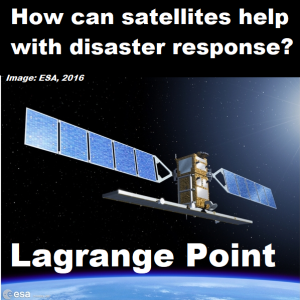
Monday Dec 02, 2019
Episode 355 - Satellites keeping us safe on the ground
Monday Dec 02, 2019
Monday Dec 02, 2019
Satellites can help save lives down on earth, by helping us better respond in disasters. When a flood, tsunami or other disaster strikes, satellites can help emergency responders get where they need to be as fast as possible. Satellites can track floods in near real time and help shave minutes of disaster response times. Finding your way in a flood or fire can be tricky, but satellites can help direct emergency responders. Satellites can help track critical infrastructure like bridges or roads as they age. When a bridge fails it can be a tragedy, but satellites can help give an early warning. When we dig big tunnels we can disturb structures and buildings, so how can we use satellites to avoid a disaster.
References:
- Perry C. Oddo, John D. Bolten. The Value of Near Real-Time Earth Observations for Improved Flood Disaster Response. Frontiers in Environmental Science, 2019; 7 DOI: 10.3389/fenvs.2019.00127
- Pietro Milillo, Giorgia Giardina, Daniele Perissin, Giovanni Milillo, Alessandro Coletta, Carlo Terranova. Pre-Collapse Space Geodetic Observations of Critical Infrastructure: The Morandi Bridge, Genoa, Italy. Remote Sensing, 2019; 11 (12): 1403 DOI: 10.3390/rs11121403

Monday Nov 04, 2019
Episode 351 - A new dwarf planet and what makes an exoplanet habitable
Monday Nov 04, 2019
Monday Nov 04, 2019
What makes a dwarf planet not a planet? What are the rules governing the word planet? Just how many dwarf planets are out there in our solar system? How can we use telescopes and modelling to add or subtract a dwarf planet from that list? We've talked about Goldilocks zone exoplanets, but what about their ability to withstand space weather? What role does a star's magnetic field play in protecting a planet from damaging radiation? Does space weather need to be added to the exoplanet Goldilocks zone?
References:
- P. Vernazza, L. Jorda, P. Ševeček, M. Brož, M. Viikinkoski, J. Hanuš, B. Carry, A. Drouard, M. Ferrais, M. Marsset, F. Marchis, M. Birlan, E. Podlewska-Gaca, E. Jehin, P. Bartczak, G. Dudzinski, J. Berthier, J. Castillo-Rogez, F. Cipriani, F. Colas, F. DeMeo, C. Dumas, J. Durech, R. Fetick, T. Fusco, J. Grice, M. Kaasalainen, A. Kryszczynska, P. Lamy, H. Le Coroller, A. Marciniak, T. Michalowski, P. Michel, N. Rambaux, T. Santana-Ros, P. Tanga, F. Vachier, A. Vigan, O. Witasse, B. Yang, M. Gillon, Z. Benkhaldoun, R. Szakats, R. Hirsch, R. Duffard, A. Chapman, J. L. Maestre. A basin-free spherical shape as an outcome of a giant impact on asteroid Hygiea. Nature Astronomy, 2019; DOI: 10.1038/s41550-019-0915-8
- Alison O. Farrish, David Alexander, Mei Maruo, Marc DeRosa, Frank Toffoletto, Anthony M. Sciola. Characterizing the Magnetic Environment of Exoplanet Stellar Systems. The Astrophysical Journal, 2019; 885 (1): 51 DOI: 10.3847/1538-4357/ab4652

Monday Sep 16, 2019
Monday Sep 16, 2019
We look at galactic events, where galaxies collide, stars form and emptiness of space. Space is so unfathomably huge, but its still possible for galaxies to collide. The Milky Way was formed through one of this violent collisions over 10 billion years ago. Space seems empty but there are sections of space that are emptier than others, the great Local Void around the Local group. Stars forming in galaxies rely on gas clouds, but what does it take to form a star? What do you need to really make a good nursery for stars?
- R. Brent Tully, Daniel Pomarède, Romain Graziani, Hélène M. Courtois, Yehuda Hoffman, Edward J. Shaya. Cosmicflows-3: Cosmography of the Local Void. The Astrophysical Journal, 2019; 880 (1): 24 DOI: 10.3847/1538-4357/ab2597
- Kazufumi Torii, Shinji Fujita, Atsushi Nishimura, Kazuki Tokuda, Mikito Kohno, Kengo Tachihara, Shu-ichiro Inutsuka, Mitsuhiro Matsuo, Mika Kuriki, Yuya Tsuda, Tetsuhiro Minamidani, Tomofumi Umemoto, Nario Kuno, Yusuke Miyamoto. FOREST Unbiased Galactic plane Imaging survey with the Nobeyama 45 m telescope (FUGIN). V. Dense gas mass fraction of molecular gas in the Galactic plane. Publications of the Astronomical Society of Japan, 2019; DOI: 10.1093/pasj/psz033
- Carme Gallart, Edouard J. Bernard, Chris B. Brook, Tomás Ruiz-Lara, Santi Cassisi, Vanessa Hill, Matteo Monelli. Uncovering the birth of the Milky Way through accurate stellar ages with Gaia. Nature Astronomy, 2019; DOI: 10.1038/s41550-019-0829-5
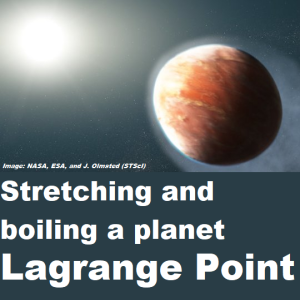
Monday Aug 05, 2019
Episode 338 - Exoplanets boiling and stretching, Goldilocks and Supernova
Monday Aug 05, 2019
Monday Aug 05, 2019
Boiling planets being stretched and squished. Tiny white dwarf stars going supernova. Goldilocks planets potentially with liquid water. Exoplanet hunting is now a lot easier with missions like TESS and veterans like Hubble. We look at some special cases, and how searching for 1 planet can uncover loads more. Sometimes planets are lurking in old observatory data, we just need to know where to look. Too hot, too cold, GJ357 potentially has a planet that's just right with liquid water. What causes a White Dwarf to go supernova? It needs more than itself to kickstart it into a Type 1a nova...so where does the extra boost come from? Devouring another planet? Or another star?
References:
- L. Kaltenegger, J. Madden, Z. Lin, S. Rugheimer, A. Segura, R. Luque, E. Palle, N. Espinoza. The Habitability of GJ 357 d Possible Climates and Observability. Astrophysical Journal Letters, 2019; (accepted) [link]
- R. Luque, E. Pallé, D. Kossakowski, S. Dreizler, J. Kemmer, N. Espinoza. Planetary system around the nearby M dwarf GJ 357 including a transiting, hot, Earth-sized planet optimal for atmospheric characterization. Astronomy & Astrophysics, 2019; DOI: 10.1051/0004-6361/201935801
- David K. Sing, Panayotis Lavvas, Gilda E. Ballester, Alain Lecavelier des Etangs, Mark S. Marley, Nikolay Nikolov, Lotfi Ben-Jaffel, Vincent Bourrier, Lars A. Buchhave, Drake L. Deming, David Ehrenreich, Thomas Mikal-Evans, Tiffany Kataria, Nikole K. Lewis, Mercedes López-Morales, Antonio García Muñoz, Gregory W. Henry, Jorge Sanz-Forcada, Jessica J. Spake, Hannah R. Wakeford. The Hubble Space Telescope PanCET Program: Exospheric Mg ii and Fe ii in the Near-ultraviolet Transmission Spectrum of WASP-121b Using Jitter Decorrelation. The Astronomical Journal, 2019; 158 (2): 91 DOI: 10.3847/1538-3881/ab2986
- P J Vallely, M Fausnaugh, S W Jha, M A Tucker, Y Eweis, B J Shappee, C S Kochanek, K Z Stanek, Ping Chen, Subo Dong, J L Prieto, T Sukhbold, Todd A Thompson, J Brimacombe, M D Stritzinger, T W-S Holoien, D A H Buckley, M Gromadzki, Subhash Bose. ASASSN-18tb: a most unusual Type Ia supernova observed by TESS and SALT. Monthly Notices of the Royal Astronomical Society, 2019; 487 (2): 2372 DOI: 10.1093/mnras/stz1445
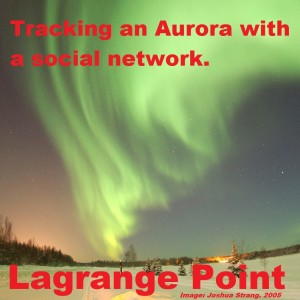
Sunday Jul 07, 2019
Lagrange Point Episode 334 - Hidden in empty space
Sunday Jul 07, 2019
Sunday Jul 07, 2019
|
|
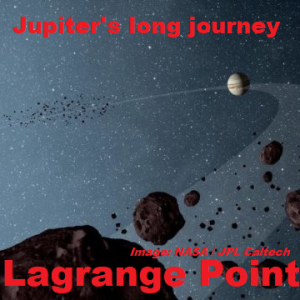
Monday Jun 03, 2019
Episode 329 - Mysteries from the formation of our solar systems
Monday Jun 03, 2019
Monday Jun 03, 2019
There are many things we don't understand from the formation of our solar system. Why did Jupiter end up with weird asymmetrical groupings of asteroids around it? Is there a region of dust free space around the sun? If there is why can't we find it? What caused the beautiful rings of dust millions of kms wide around Venus and Mercury? Where did that dust come from? All these questions and more as we unpack the hidden parts of our solar system.
References:
- Petr Pokorný, Marc Kuchner. Co-orbital Asteroids as the Source of Venus's Zodiacal Dust Ring. The Astrophysical Journal, 2019; 873 (2): L16 DOI: 10.3847/2041-8213/ab0827
- S. Pirani, A. Johansen, B. Bitsch, A.J. Mustill, D. Turrini. Consequences of planetary migration on the minor bodies of the early solar system. Astronomy & Astrophysics, 2019; DOI: 10.1051/0004-6361/201833713
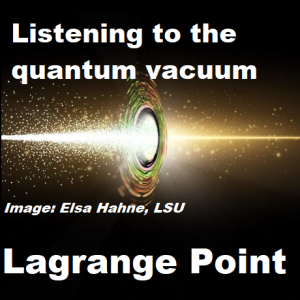
Monday Apr 29, 2019
Monday Apr 29, 2019
Hunting for missing dark matter or gravitational waves involves incredibly precise measurements. Scientists are constantly developing new measurement techniques to try and find new sources of data and test theories. Whether it be staring at the space between Andromeda and the Milky Way to find primordial black holes, to looking in the remnants of a white dwarf using spectroscopy. Plus ways to make the newer generation of gravitational wave detectors more accurate by listening to quantum noise.
References:
- Hiroko Niikura, Masahiro Takada, Naoki Yasuda, Robert H. Lupton, Takahiro Sumi, Surhud More, Toshiki Kurita, Sunao Sugiyama, Anupreeta More, Masamune Oguri, Masashi Chiba. Microlensing constraints on primordial black holes with Subaru/HSC Andromeda observations. Nature Astronomy, 2019; DOI: 10.1038/s41550-019-0723-1
- Christopher J. Manser, Boris T. Gänsicke, Siegfried Eggl, Mark Hollands, Paula Izquierdo, Detlev Koester, John D. Landstreet, Wladimir Lyra, Thomas R. Marsh, Farzana Meru, Alexander J. Mustill, Pablo Rodríguez-Gil, Odette Toloza, Dimitri Veras, David J. Wilson, Matthew R. Burleigh, Melvyn B. Davies, Jay Farihi, Nicola Gentile Fusillo, Domitilla De Martino, Steven G. Parsons, Andreas Quirrenbach, Roberto Raddi, Sabine Reffert, Melania Del Santo, Matthias R. Schreiber, Roberto Silvotti, Silvia Toonen,†, Eva Villaver, Mark Wyatt, Siyi Xu, Simon Portegies Zwart. A planetesimal orbiting within the debris disc around a white dwarf star. Science, 2019 DOI: 10.1126/science.aat5330
- Jonathan Cripe, Nancy Aggarwal, Robert Lanza, Adam Libson, Robinjeet Singh, Paula Heu, David Follman, Garrett D. Cole, Nergis Mavalvala, Thomas Corbitt. Measurement of quantum back action in the audio band at room temperature. Nature, 2019; DOI: 10.1038/s41586-019-1051-4
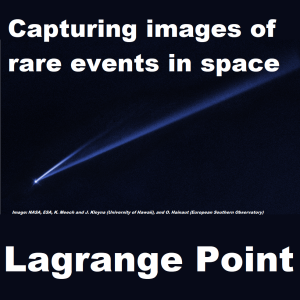
Monday Apr 15, 2019
Episode 322 - Imaging strange objects in space (and on earth)
Monday Apr 15, 2019
Monday Apr 15, 2019
Taking images of strange objects in space is incredibly complicated and requires both large telescopes, and even larger teams of scientists to pour over the data. Techniques, codes and algorithms to sift through that data to find the unusual patterns is an incredibly difficult and challenging task. However with it we can capture some incredible things whether it be images of black holes, to asteroids literally spinning themselves apart, or even missing endangered species here on earth.
References:
- Iowa State University. (2019, March 27). Data flows from NASA's TESS Mission, leads to discovery of Saturn-sized planet. ScienceDaily. Retrieved April 13, 2019 from www.sciencedaily.com/releases/2019/03/190327174701.htm
- NASA/Goddard Space Flight Center. (2019, March 28). Hubble watches spun-up asteroid coming apart. ScienceDaily. Retrieved April 13, 2019 from www.sciencedaily.com/releases/2019/03/190328112601.htm
- British Ecological Society. (2019, April 9). Astro-ecology: Counting orangutans using star-spotting technology: A collaboration between astrophysicists, conservationists and ecologists aims to save rare and endangered animals. ScienceDaily. Retrieved April 13, 2019 from www.sciencedaily.com/releases/2019/04/190409083245.htm

Monday Feb 25, 2019
Episode 315 - Asteroids, meteorites and the destruction of moons
Monday Feb 25, 2019
Monday Feb 25, 2019
It's easy to think of the solar system as a static object that's always been there. But by studying asteroids, meteorites and moons we can piece together the often violent and dramatic history of our solar system. From Earth being bombarded by water bearing asteroids, to moons being broken apart and reformed around Neptune. We even follow up on some of the great work done by JAXA and the Hyabusa 2 mission. This week we look at some of the latest research into our solar system by studying the smallest often overlooked pieces.
References:
- Josep M. Trigo-Rodríguez, Albert Rimola, Safoura Tanbakouei, Victoria Cabedo Soto, Martin Lee. Accretion of Water in Carbonaceous Chondrites: Current Evidence and Implications for the Delivery of Water to Early Earth. Space Science Reviews, 2019; 215 (1) DOI: 10.1007/s11214-019-0583-0
- Rincon, P. (2019, February 21). Hayabusa-2: Japan mission set to 'bite an asteroid'. Retrieved from https://www.bbc.com/news/science-environment-47293317
- M. R. Showalter, I. de Pater, J. J. Lissauer, R. S. French. The seventh inner moon of Neptune. Nature, 2019; 566 (7744): 350 DOI: 10.1038/s41586-019-0909-9
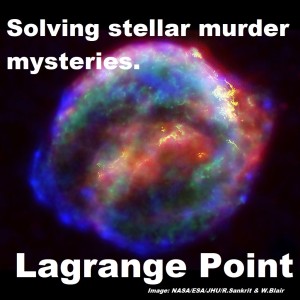
Monday Jan 28, 2019
Monday Jan 28, 2019
What happens when a star dies? We can investigate what is left behind at the scene of the crime to piece together the final moments of a star. Some become white dwarfs so cold and cool they crystallize with thick oxygen and carbon skins. Others collapse in on themselves becoming supernova in a catastrophic core collapse. But sometimes in complex binary systems there is an accomplice that pushes the star over the edge, into supernova territory. Plus super massive black holes can devour passing stars, but sometimes they have a little help.
- Pier-Emmanuel Tremblay, Gilles Fontaine, Nicola Pietro Gentile Fusillo, Bart H. Dunlap, Boris T. Gänsicke, Mark A. Hollands, J. J. Hermes, Thomas R. Marsh, Elena Cukanovaite, Tim Cunningham. Core crystallization and pile-up in the cooling sequence of evolving white dwarfs. Nature, 2019; 565 (7738): 202 DOI: 10.1038/s41586-018-0791-x
- Graham ML et al. Delayed Circumstellar Interaction for Type Ia SN 2015cp Revealed by an HST Ultraviolet Imaging Survey. The Astrophysical Journal, 2019
- Dheeraj R. Pasham, Ronald A. Remillard, P. Chris Fragile, Alessia Franchini, Nicholas C. Stone, Giuseppe Lodato, Jeroen Homan, Deepto Chakrabarty, Frederick K. Baganoff, James F. Steiner, Eric R. Coughlin, Nishanth R. Pasham. A loud quasi-periodic oscillation after a star is disrupted by a massive black hole. Science, Jan. 9, 2019; DOI: 10.1126/science.aar7480

Monday Jan 14, 2019
Episode 309 - Mysterious signals from outside our galaxy!
Monday Jan 14, 2019
Monday Jan 14, 2019
Space is filled with incredibly strange objects, from black holes to neutron stars. In the right conditions these strange stellar objects create incredibly powerful radio bursts which give radio astronomers a treasure trove of data. From the WOW! Signal to Pulsars we recap the history of strange space signals, and we look at the modern hunt for Fast Radio Bursts (FRBs) and how the CHIME observatory in Canada is shedding light on this mystery.
- CHIME FRB Collaboration. Observations of fast radio bursts at frequencies down to 400 megahertz. Nature, 2019 DOI: 10.1038/s41586-018-0867-7
- CHIME FRB Collaboration. A second source of repeating fast radio bursts. Nature, 2019 DOI: 10.1038/s41586-018-0864-x
- Mann, Adam (28 March 2017). "Core Concept: Unraveling the enigma of fast radio bursts". Proc Natl Acad Sci U S A. 114 (13): 3269–3271. Bibcode:2017PNAS..114.3269M. doi:10.1073/pnas.1703512114. PMC 5380068. PMID 28351957.

Monday Dec 17, 2018
Episode 305 - Reaching space, the darkside of the moon and wet asteroids
Monday Dec 17, 2018
Monday Dec 17, 2018
It's been a busy week in space news from Virgin Galactic finally reaching space, to wet asteroids and even a mystery in space. We find out about the latest missions to investigate surprisingly damp asteroids by JAXA and NASA. We recap the swirling controversy around a mysterious hole in the Soyuz spacecraft, plus the latest on Chang'e-4's journey to the dark side of the moon.
- Antczak, J. (n.d.). Virgin Galactic tourism rocket ship reaches space in test. Retrieved from https://phys.org/news/2018-12-virgin-galactic-rocket-ship-space.html
- Jones, A. (2018, December 12). Chang'e-4 spacecraft enters lunar orbit ahead of first-ever far side landing. Retrieved from https://spacenews.com/change-4-spacecraft-enters-lunar-orbit-ahead-of-first-ever-far-side-landing/
- Yamaguchi, M. (n.d.). Photos from Japan space rovers show rocky asteroid surface. Retrieved from https://phys.org/news/2018-12-photos-japan-space-rovers-rocky.html
- Materials provided by University of Arizona. Original written by Erin Morton/OSIRIS-REx and Daniel Stolte. Note: Content may be edited for style and length.
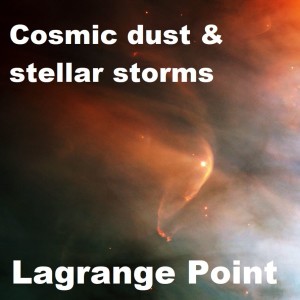
Monday Nov 12, 2018
Episode 300 - Once in a blue asteroid, hidden objects in the Lagrange Point
Monday Nov 12, 2018
Monday Nov 12, 2018
In our 300th episode we return to our roots, the Lagrange Point. We find out about some odd objects hanging out at Earth's Lagrange Point, and how satellites can survive fierce solar storms only to be undone by a stiff breeze. Plus something rarer than a blue moon, a blue asteroid!
- Judit Slíz-Balogh, András Barta, Gábor Horváth. Celestial mechanics and polarization optics of the Kordylewski dust cloud in the Earth–Moon Lagrange point L5 – Part II. Imaging polarimetric observation: new evidence for the existence of Kordylewski dust cloud. Monthly Notices of the Royal Astronomical Society, 2019; 482 (1): 762 DOI: 10.1093/mnras/sty2630
- Richard B. Horne, Mark W. Phillips, Sarah A. Glauert, Nigel P. Meredith, Alex D. P. Hands, Keith A. Ryden, Wen Li. Realistic Worst Case for a Severe Space Weather Event Driven by a Fast Solar Wind Stream. Space Weather, 2018; DOI: 10.1029/2018SW001948
- University of Arizona. (2018, October 29). Rare blue asteroid reveals itself during fly-by. ScienceDaily. Retrieved November 9, 2018 from www.sciencedaily.com/releases/2018/10/181029152849.htm

